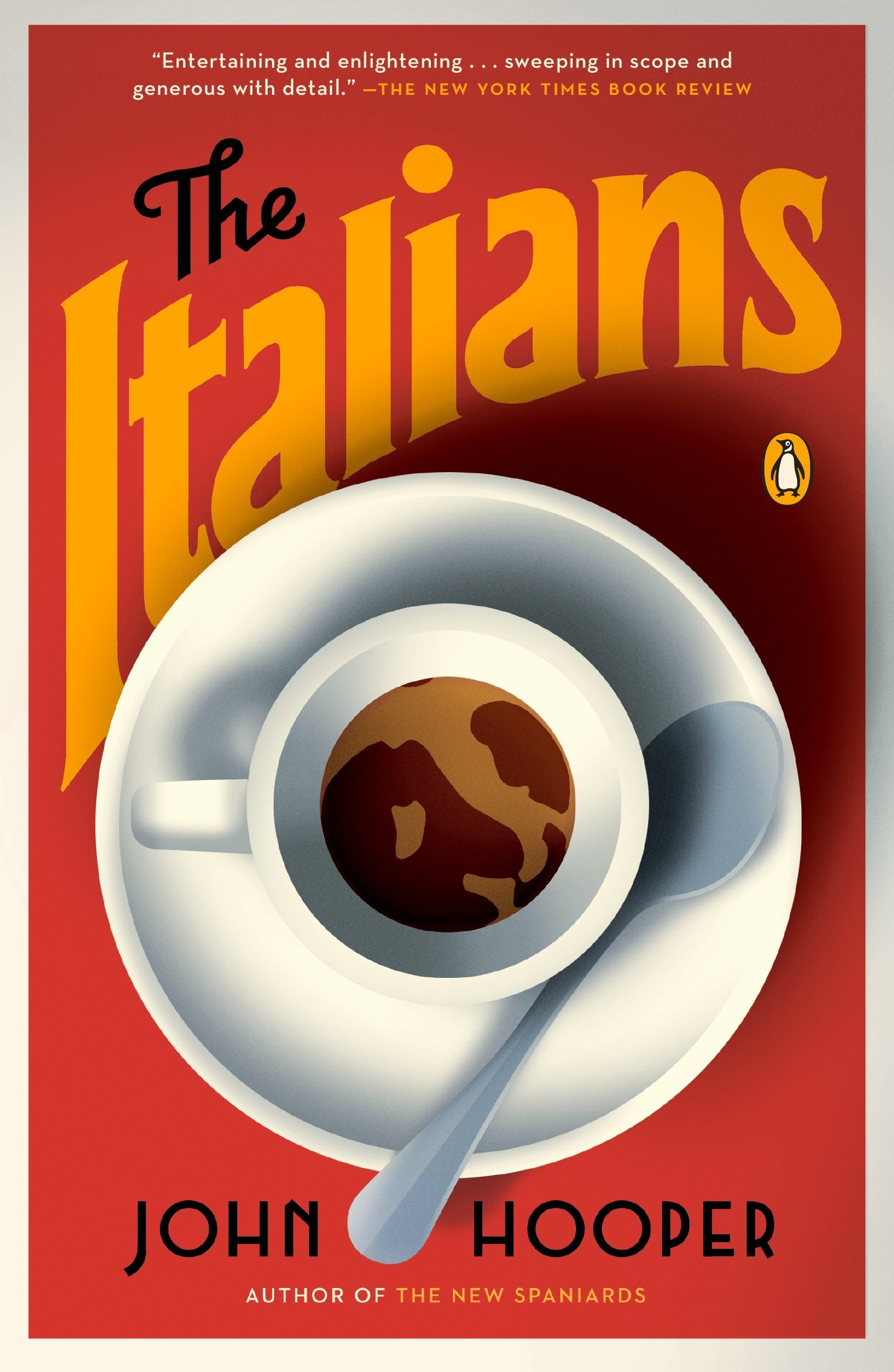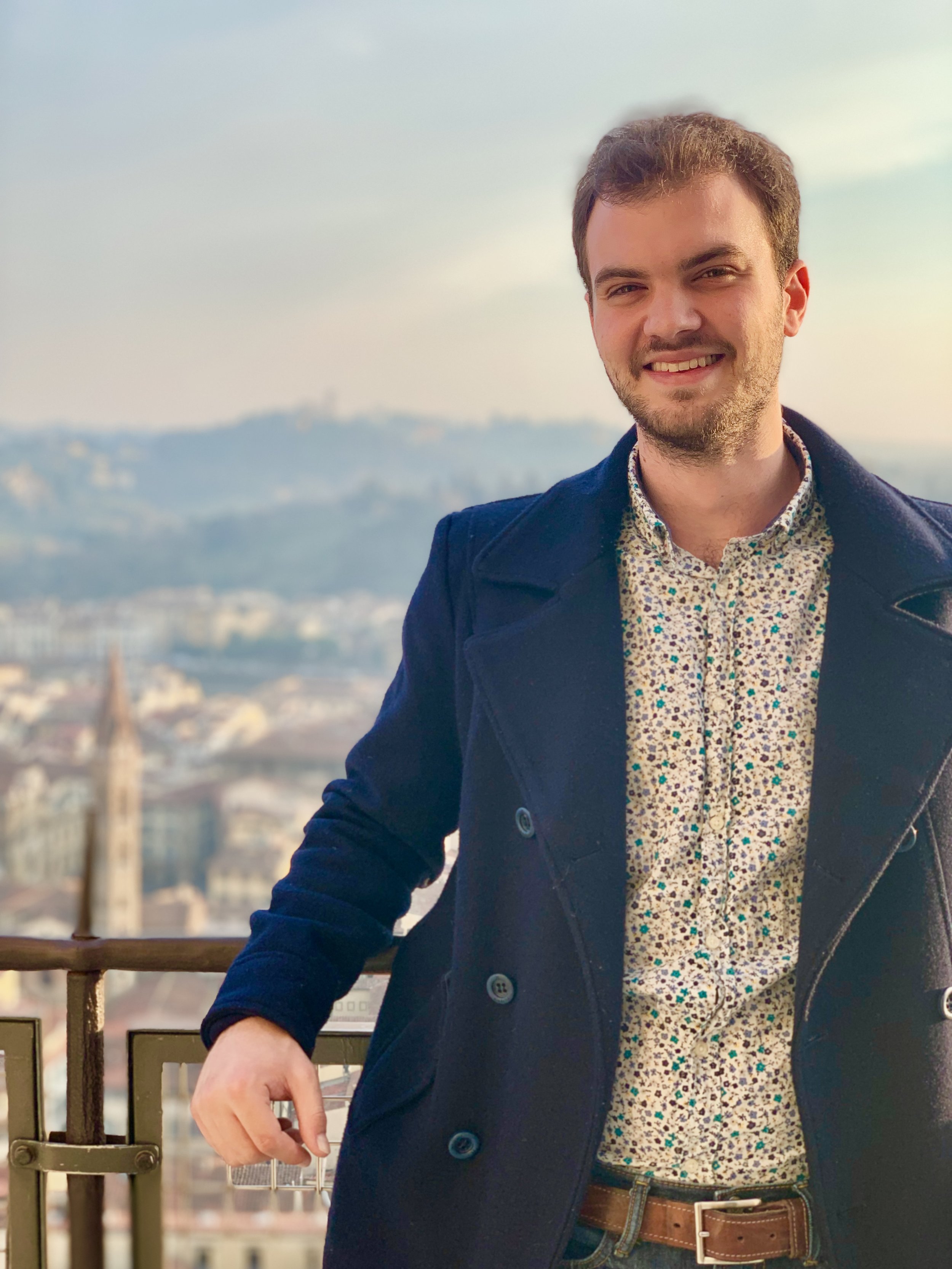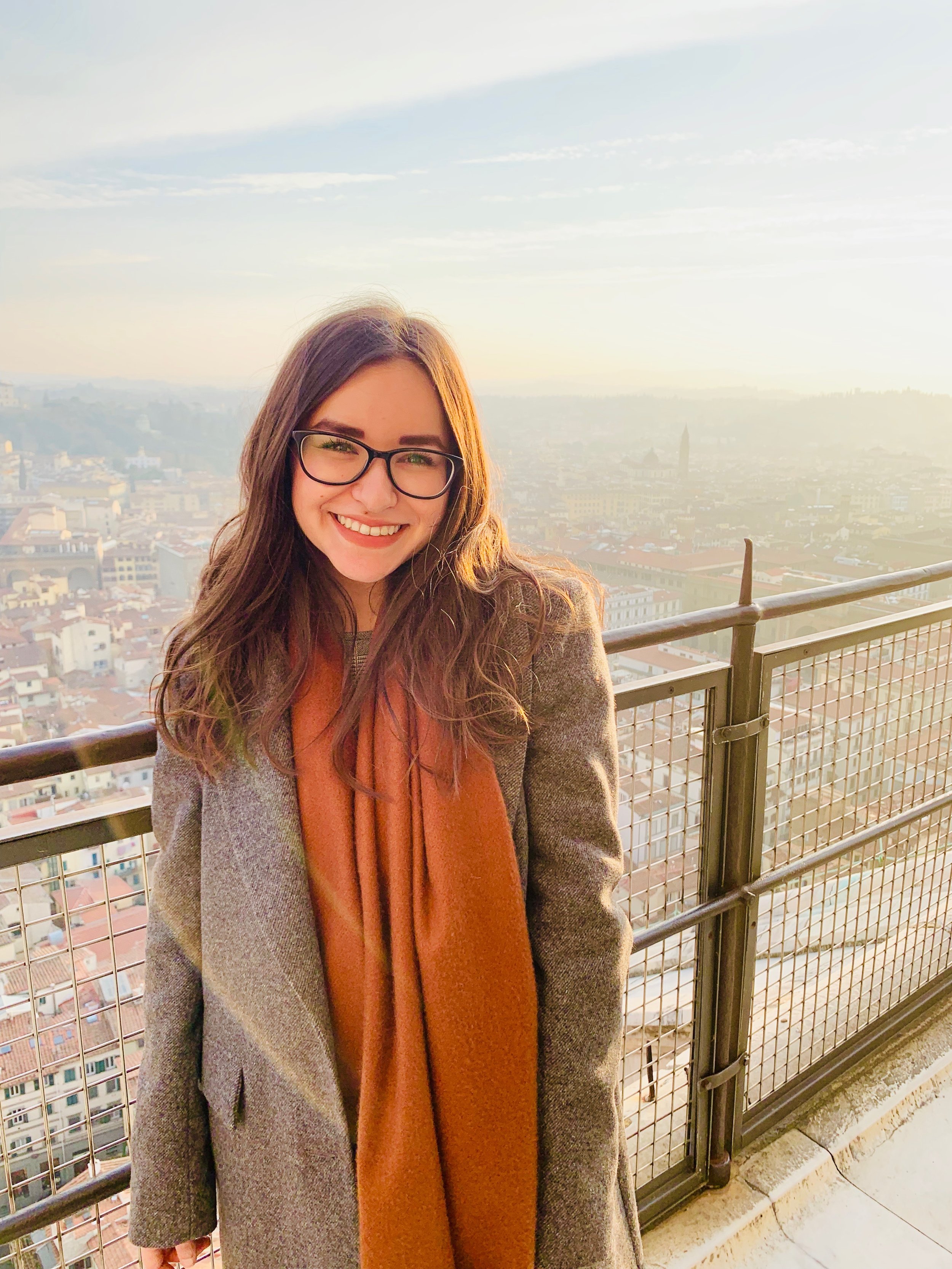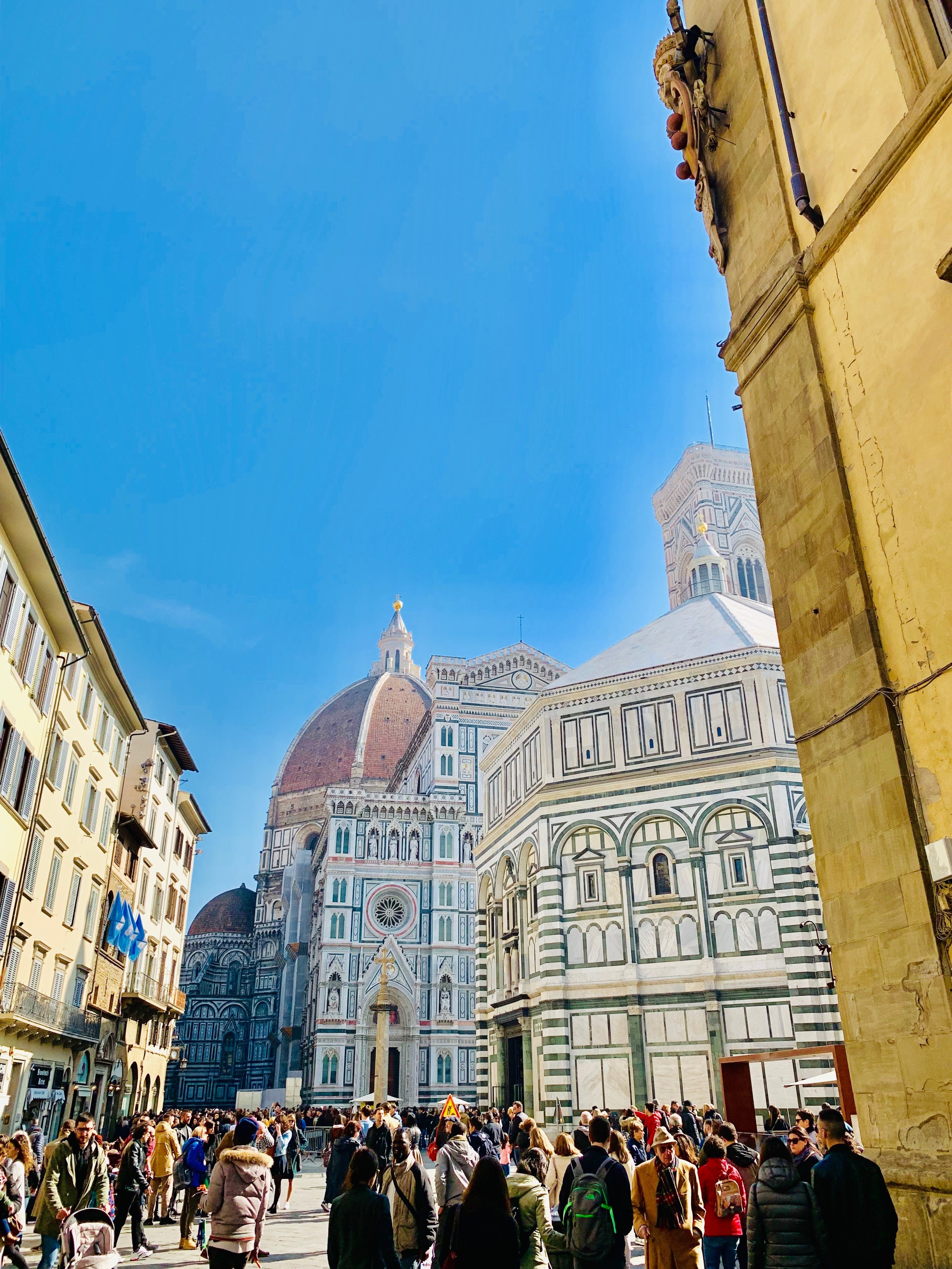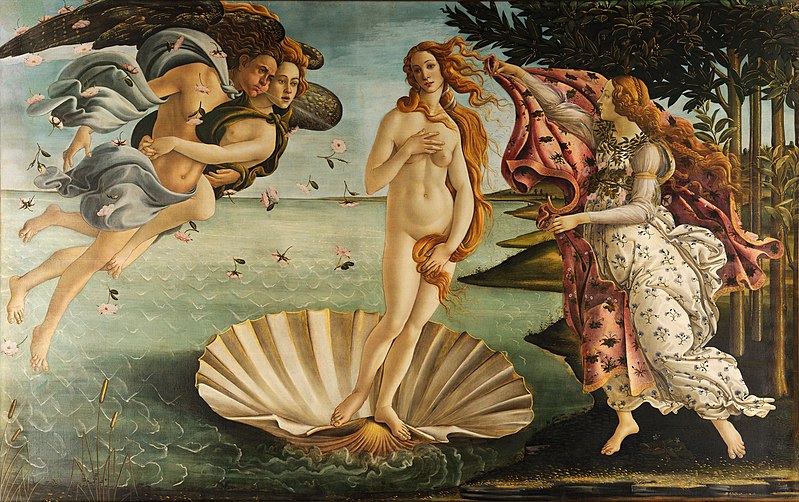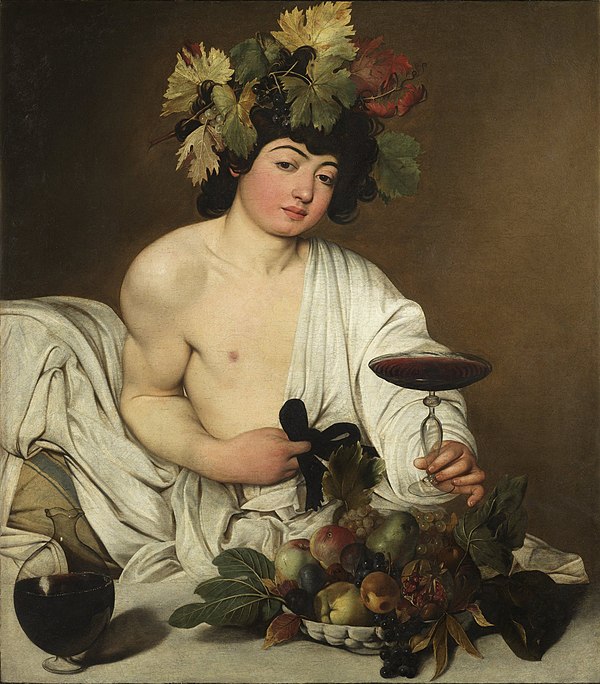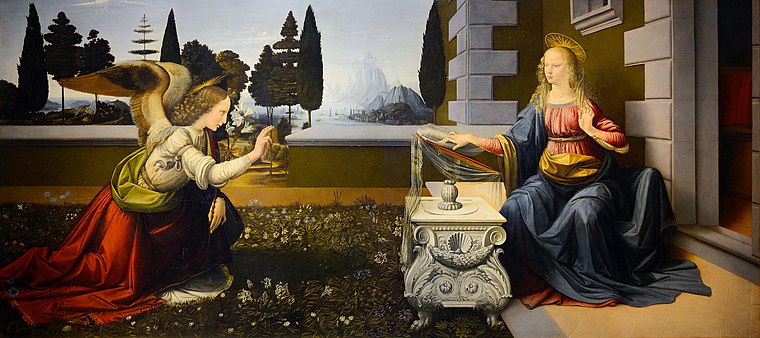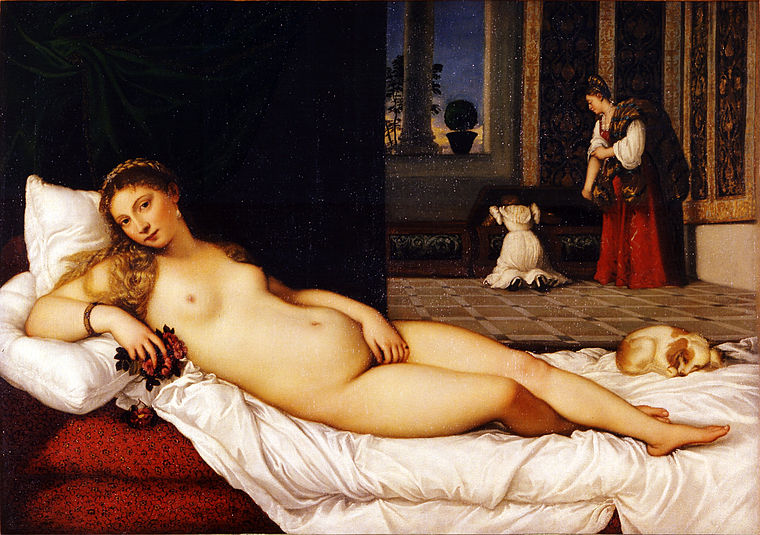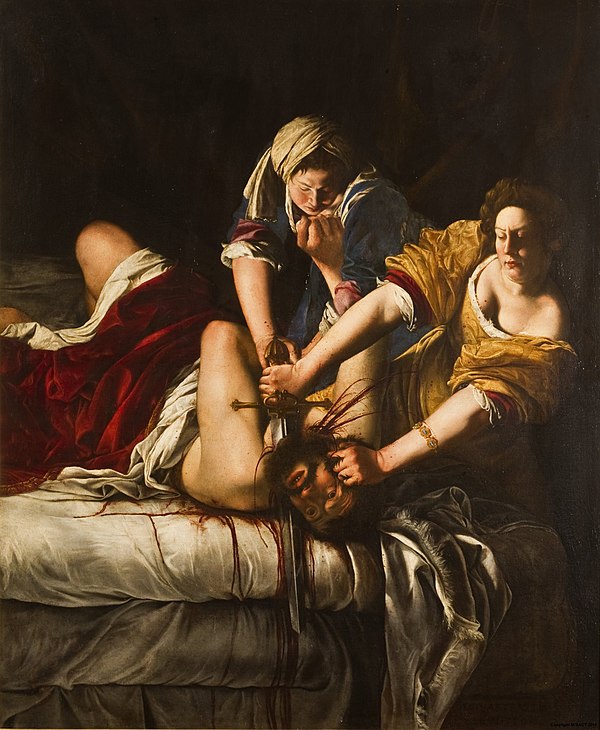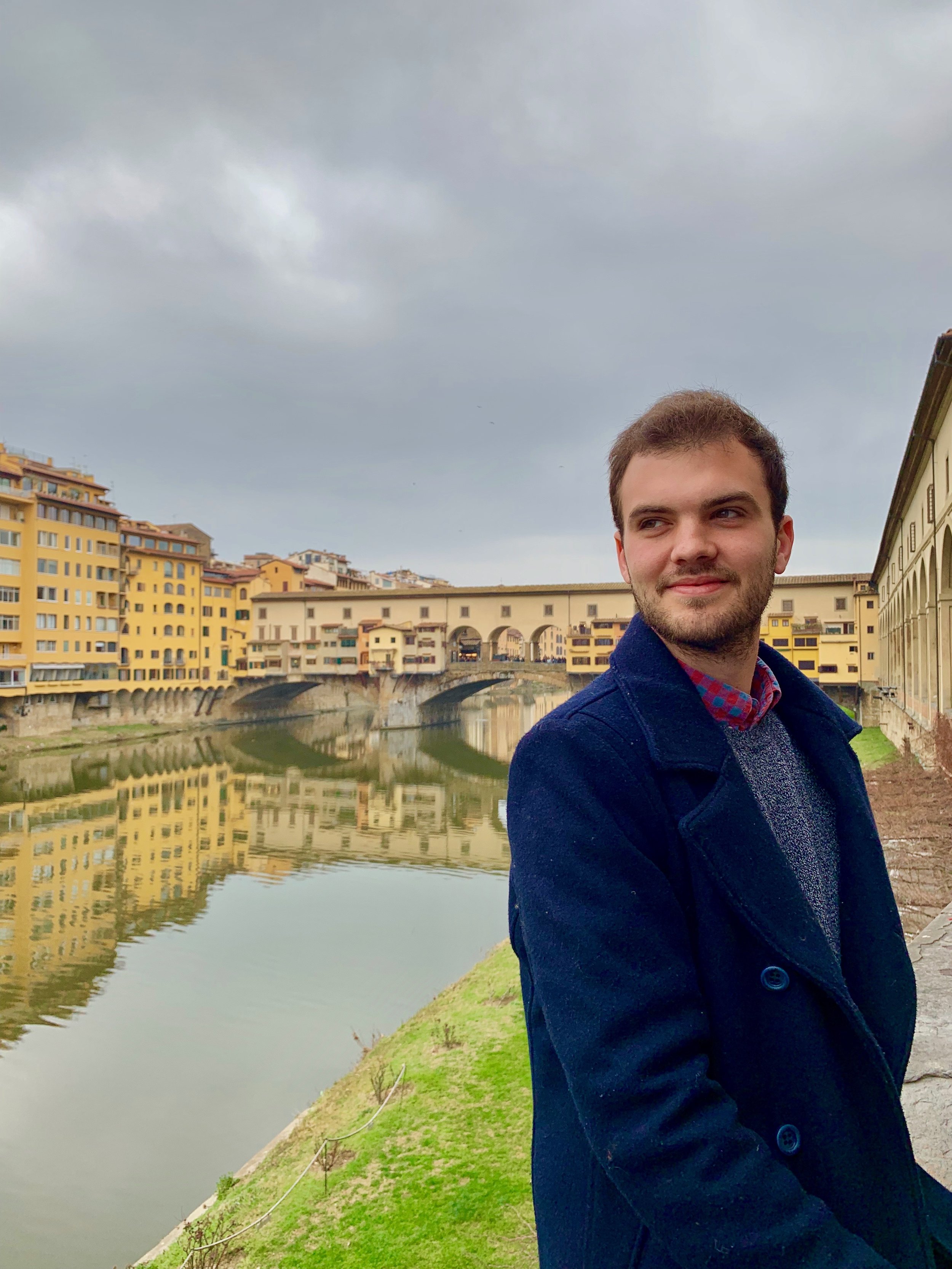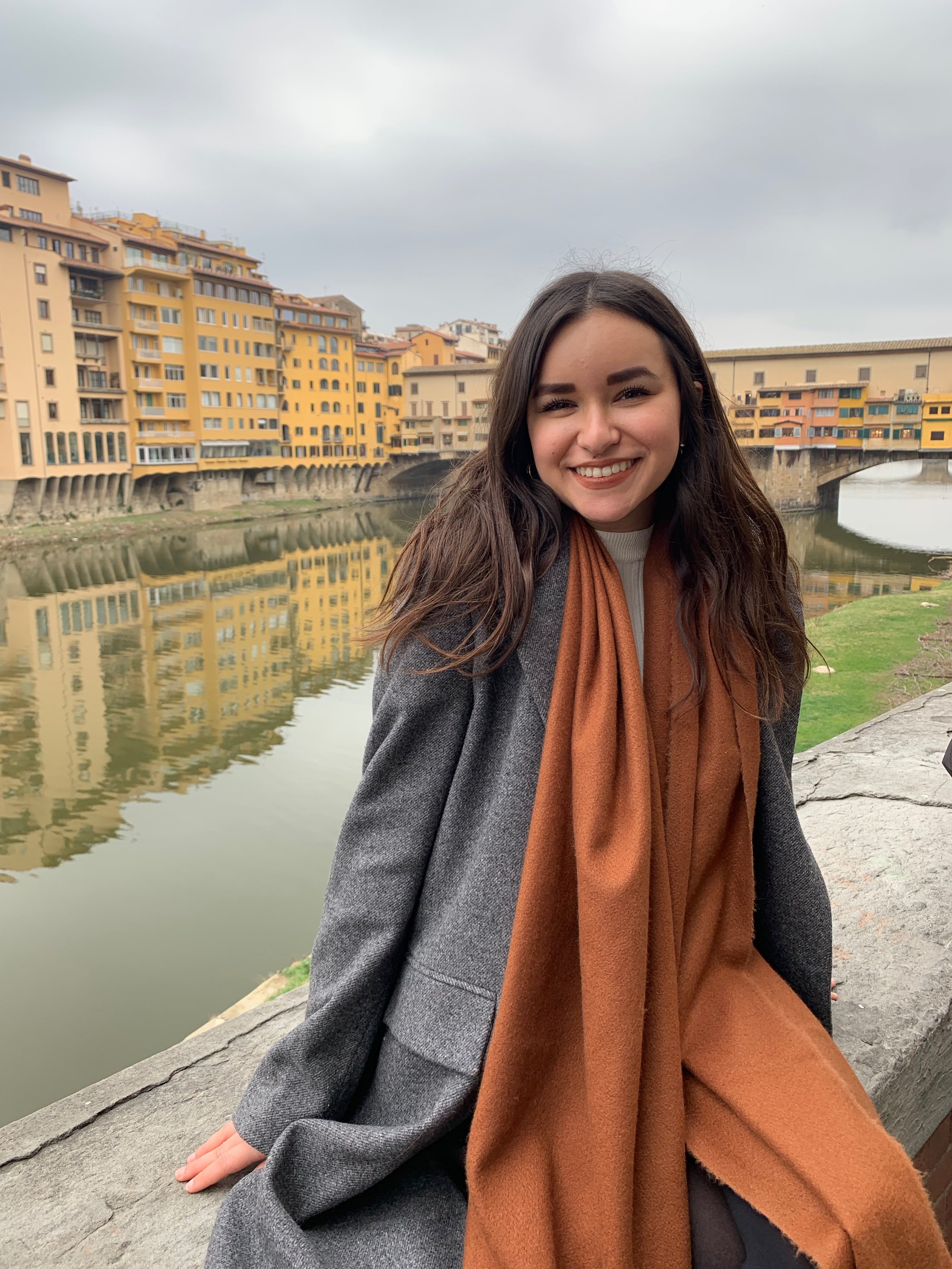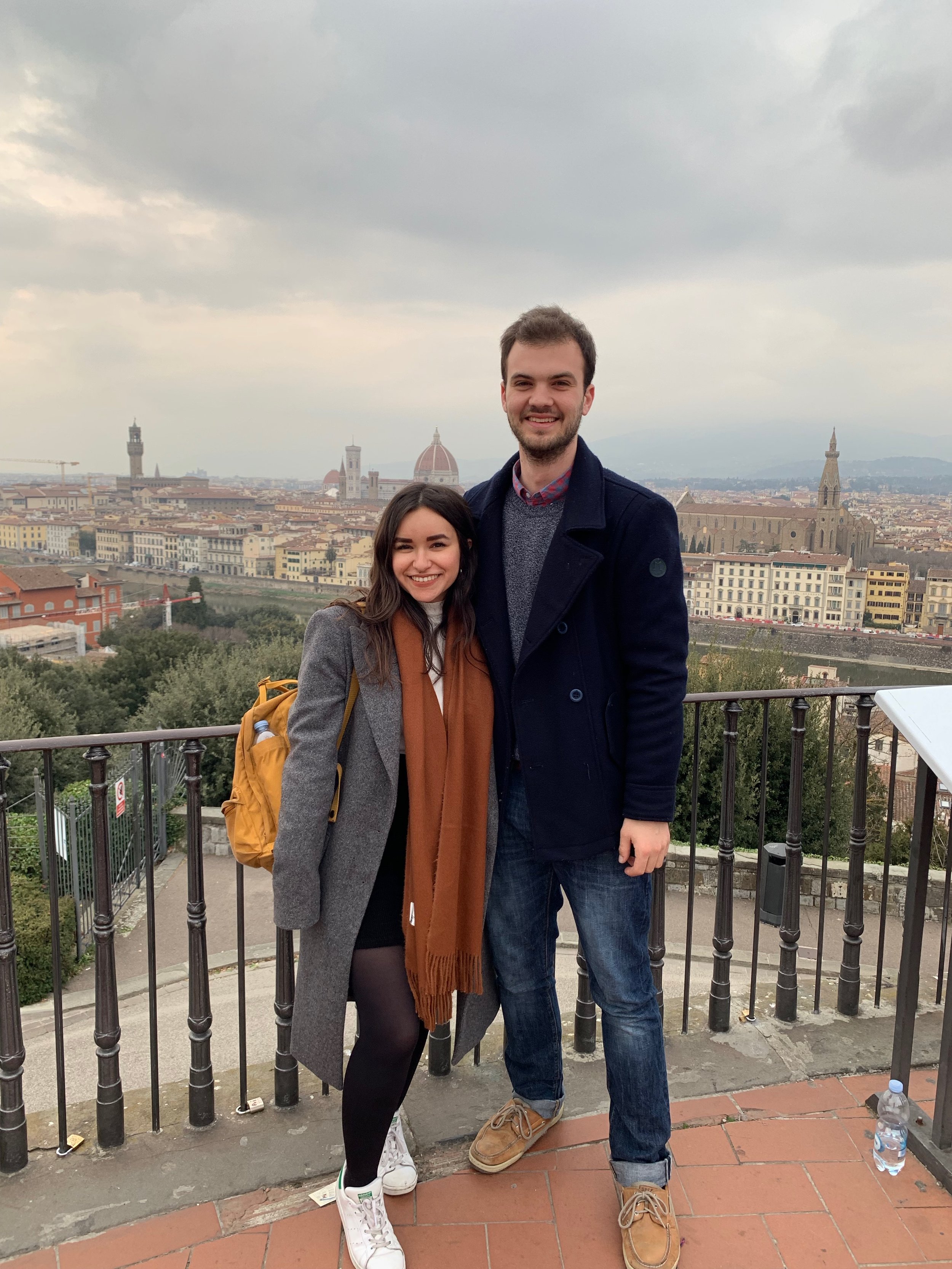Florence, Italy
Sunset on the Arno River, with a view of Ponte Vecchio, Florence’s oldest bridge.
Renaissance Revival
Florence is a city familiar to many, its fame known throughout the world for top-notch culture, food, and arts. As the birthplace of the Renaissance, the Tuscan capital was home to artistic titans Michelangelo, Da Vinci, Brunelleschi, and Botticelli, creating one of the most important centers of art in world history. If Italian Renaissance art is not really your thing, not to worry; there are plenty of fantastic restaurants and gelaterias to sample the best of Italian cuisine, and beautiful courtyards to stroll through and admire the old-world architecture. While you may have to jostle the crowds of tourists that clog the narrow, cobbled streets, Florence is worth every second of your time, especially for first-time European travelers taking that first step into unknown territory.
Best time to visit: Low season or shoulder season to avoid the crowds (Jan-Apr, Sep-Dec.)
Budget: $$$ (Moderately expensive)
English level: Excellent (due to the heavy volume of tourism.)
Does anyone else think the Vespe is the international symbol of Italy?
Florentine Sights and Culture
In order to fully appreciate the long history of the city, any trip to Florence requires a basic understanding of its importance in Western civilization. The birthplace of the Renaissance, the seat of power of the Medici family, and the center of European trade and finance in the Middle Ages, Florence was for a time the most important city in all of Europe. Because of Florence’s major impact on culture and the arts, traces of its history are scattered around plazas, street corners, and old buildings all over the city. Anywhere you walk, you’re bound to find some vestige of Florentine history; it could be an artwork commissioned by a famous Italian patron or an old church filled with relics from a bygone age. It gives Florence a secret, romantic atmosphere that pulls you in and leaves you wanting more.
Florentine apartment with balcony. The green shutters are typical of the city.
Despite the richness of its arts and architecture, I must admit that it was difficult to connect with locals in Florence because of the volume of tourists in the city. Locals tend to steer clear of the center, or are too preoccupied by the bustle to connect with visitors who are hoping to learn more about Italy (which I was often able to do in other European countries less impacted by tourism.) This doesn’t mean there isn’t a way to learn more about Italian culture and life while you’re there, but it might require a little more effort.
Anyone interested in learning more about Italian history and culture should pick up John Hooper’s book The Italians. Hooper is Italy’s foreign correspondent for The Economist and his book provides great insight into life in contemporary Italy.
John Hooper’s The Italians provides insight into Italian life and culture. A good book for those wanting to learn more about Italy before a trip or to brush up on their knowledge of the country in today’s political and social context.
Cattedrale di Santa Maria del Fiore (Il Duomo)
View of Florence Cathedral, with Giotto’s Campanile at left. Here you can see the scale of this magnificent work of Renaissance architecture.
The iconic building that dominates the skyline of Florence is the Florence Cathedral, and it only takes one look at this magnificent building to send your heart soaring in amazement. Also called the Cathedral of Saint Mary the Flower, and colloquially, Il Duomo (the Dome), the Florence Cathedral is the centerpiece of the Piazza del Duomo (Cathedral Square) and the UNESCO World Heritage site that includes the historic center of Florence. Construction of the cathedral first began in 1296 in the Italian Gothic style (think high ceilings, ribbed vaults, and ornate decorations) and was finished in the early 1400’s. Today the exterior of the basilica is beautifully designed, made of a marble structure painted with various shades of green and pink with white borders. The current façade was designed by Emilio De Fabris in the 19th century.
Exterior façade of Florence Cathedral basilica, designed by Emilio De Fabris. The basilica is designed with polychrome marble panels of green, white, and pink. The Gothic style is evident in the entrance arch, the windows, and the statues that adorn the building.
What makes the Florence Cathedral unique from other Gothic cathedrals built in Europe during the Middle Ages is the famous dome that sits atop the building. In the Middle Ages, architects thought it would be impossible to construct a dome because the technology allowing a dome to support its own weight simply did not exist at the time. Here enters Filippo Brunelleschi, Italian architect and engineer, selected to build the impossible, a freestanding brick dome. Using a series of self-designed machines and complex mathematical and architectural models, Brunelleschi engineered a series of special stone and iron chains as arches to support the weight of the octagonal dome as it was being constructed. The inner shell of the dome was also connected to vertical ribs which evenly distributed the weight of the structure to the outer dome, preventing its collapse. When completed in 1461, the Dome was the largest in the world and remains to this day the largest brick dome ever constructed (four million bricks strong!)
View of the Dome of Florence Cathedral.
To get a real feel for the construction and style of the Dome, I would suggest climbing the Duomo, which lets you see the building up close and personal. At the end of the climb, you’re rewarded with great views of the whole city! Buy your tickets well in advance. My friend Monserrat and I went at the end of February and there were still long lines to access the Dome. You can buy your tickets in the Duomo Museum, which is right next to the cathedral. After climbing the 463 steps to the top (I hope you’re in shape), you have the opportunity to see the city and take some nice photos. It’s nice to see Florence from a different perspective!
Giotto’s Campanile and Florence Baptistry
Within the Florence Cathedral Complex you also have the opportunity to see two other important buildings, Giotto’s Campanile and Florence Baptistry. The Campanile is a bell tower right next to the church and it was designed by Giotto and completed in 1359. The Florence Baptistry is also within the church complex and displays some truly incredible bronze doors. Michelangelo called them “the Gates of Paradise.” The Baptistry is one of the oldest buildings in the city and is the site of the baptism of members of the Medici family and famous Italian poet Dante Alighieri (as in Dante’s Inferno.)
Side view of the Florence Baptistry.
Eastern gates of the Florence Baptistry, showing the “Gates of Paradise.”
Galleria dell’Academia
The Galleria dell’Academia is an art museum in Florence housing one of the most famous sculptures in art history, David by Michelangelo. Already impressive in reproduction, seeing the masterpiece with your own eyes is a wholly different kind of experience. In sculpture I’ve found it’s hard to get a feel for the nuances of the work in a picture online; only in person can you really inspect, observe, and ponder what the sculptor has presented.
I remember approaching the statue and being completely caught off guard by its grandeur and colossal size, standing 17 feet tall. I was under the impression that it was closer to a life-size replica of the famous biblical figure, but I was wrong. To think Michelangelo could carve something so life-like, so pensive, so human, out of marble is testament to the genius of the man. I spent maybe 30 minutes observing David from every possible angle. I wish I could go back tomorrow and take another look at him. And to think that this marble man has stood for over 500 years and still stands on his two feet almost defies logic.
Michelangelo’s David, one of the great masterpieces in the history of sculpture.
Uffizi Gallery
Entrance to Uffizi Gallery
One of the rooms inside the Uffizi Gallery.
The Uffizi Gallery is the premier art museum in Florence, housing a spectacular collection of Italian Renaissance and Baroque art from the best Italian artists ever: Giotto, Leonardo da Vinci, Michelangelo, Botticelli, Caravaggio, Raphael, Titian, Parmigianino, and more. The museum itself is located within a palace with two main wings and a narrow courtyard. Get tickets far in advance, if possible. It is one of the first modern museums (opened to the public in 1765) and contains more Italian masterpieces than any other museum in the country.
Below I have provided a few of the famous artworks that are on display at the Uffizi.
The Birth of Venus by Botticelli (c. 1484-1486) depicts the goddess Venus emerging from the sea after her birth as a full grown woman.
Bacchus by Caravaggio (c. 1595) depicts a young Bacchus, the god of fertility and wine, inviting the viewer for a drink.
The Annunciation by Leonardo da Vinci (c. 1472-1475) depicts the angel Gabriel announcing to the Virgin Mary that she will give birth to Jesus, the savior of humanity.
Venus of Urbino by Titian (c. 1534) depicts a naked Venus (the goddess of love) lounging on a couch in a Renaissance palace.
Judith Slaying Holofernes by Artemisia Gentileschi (1620-1621) is my favorite of the five. Gentileschi is considered one of the only Italian woman Baroque artists who achieved fame in her time and her subject material often depicts women from myths and the Bible. In this painting, as described in the Book of Judith, the Israelite Judith assassinates the Assyrian general Holofernes by beheading him. It is believed that this is a self portrait of Gentileschi as Judith, and her art mentor Agostino Tassi as Holofernes, due to the fact that Tassi raped her while she was under his tutelage. Perhaps it is the first Italian feminist painting? We approve!
Palazzo Vecchio
Exterior of the Palazzo Vecchio, a fortified palace once home to the Medici family.
Translated as “Old Palace” from Italian, the Palazzo Vecchio is the city hall of Florence and a fortified palace that was once of the home of the Medici family. Nowadays you can explore the palace, which contains decorated hallways, courtyards, and interesting works of art. One of the most impressive is the Salone dei Cinquecento (Hall of the Five-hundred.) It is a very large room containing two murals by Leonardo and Michelangelo, depicting the victories of the Florentine Republic.
Salone dei Cinquecento, a grand hall inside the Palazzo Vecchio with murals painted by Michelangelo and Leonardo da Vinci.
Outside of the palace you can find a copy of Michelangelo’s David in the Piazza della Signoria, the large square that opens in front of the palace. To one side is the Loggia dei Lanzi, a building with Corinthian columns and arches that holds some interesting sculptures.
Ponte Vecchio
Ponte Vecchio, the oldest surviving bridge in Florence, is made of stone and still has shops selling art, jewelry, and souvenirs.
Ponte Vecchio is a great place to relax and enjoy the Arno river after a long day of walking around the city. Constructed in 1345 after destruction in a flood, Ponte Vecchio is unique looking, with apartments jutting out of the bridge in mismatched fashion as if it were an old bazaar. This is also the one of the best places to get a look at the beautiful, warm colored houses that line either side of the river. When the sun begins to set, the whites, oranges, and pinks along the riverfront glow and radiate color. (Check out the first picture at the top of the article for an idea of how the houses brighten up.)
Piazzale Michelangelo
Sitting above the south bank of the Arno River, the Piazzale Michelangelo is your go-to spot for the Florence skyline, with wonderful views of the whole city. After a short hike (with great signage, it’s easy to do on foot, or you can also take Bus 12 or 13) you emerge on a square that was designed by Michelangelo himself. Many people come here for the views, but we happened to see several people sitting on the steps sketching the Florentine skyline. This is an excellent place to rest, but it’s especially nice when the weather is cooler at sunrise or sunset.
Florence skyline at sunset, as seen from Piazzale Michelangelo
Restaurants in Florence
When we think of Italian food, we tend to put pizza and pasta at the top of the list in our heads of what’s famous food in Italy. While that is certainly true, there are other options for people who want a little variety to their meals. Try a bistecca Fiorentina (like a prime-rib), crostini di fegato (chicken liver-paté bruschetta), or ribollita (the famous vegetable and bread soup.) It’s always good to sample new and local treats that you weren’t expecting in addition to the classic Italian food!
Osteria Santo Spirito
Here is a great place for a traditional pasta meal. Monserrat had caccio e pepe pasta and I tried a delicious mushroom gnocchi. It’s set at the back of a beautiful, isolated courtyard on the south side of town. Perfect for a late-night getaway from the hustle and bustle of the city. The restaurant is very well regarded and gets quite busy, so don’t be afraid to call in ahead of time to make a reservation!
Address: Piazza Santo Spirito, 16/R, 50125 Firenze
Phone: +39 055 238 2383
http://www.osteriasantospirito.it
The seafood fettuccini special offered at Osteria Spirito Santo.
Il Pizzaiuolo
For the best Florentine pizza offered in the city, look no further than Il Pizzaiuolo, which churns out delicious pizzas with a neapolitan crust from its wood-fired oven. There are plenty of different kinds to choose from but you can’t go wrong with any of them here!
Address: Via dei Macci, 113r, 50122 Firenze
Phone: +39 055 241171
http://www.ilpizzaiuolo.it
Delicious pepperoni and olive pizza from Pizzaiuolo.
Le Vespe Café
A delicious brunch restaurant with colorful Vespe motos sitting just outside the café. They serve a variety of great items to get your day started right. The coffee was delicious, and they also make wonderful smoothies!
Address: Via Ghibellina, 84, 50122 Firenze
Phone: +39 055 388 0062
http://www.levespecafe.com
Storefront of Le Vespe Café, one of the best breakfast spots in Florence.
Gelateria La Carraia
The gelato at this gelateria just hits you different. It’s a bit of a walk past Ponte Vecchio, but ABSOLUTELY worth the extra steps. They have tons of different flavors and we went back several times to try different gelatos. All of them were amazing.
Address: Piazza Nazario Sauro, 25/r, 50124 Firenze
Phone: +39 055 280695
http://www.lacarraiagroup.eu
Mint chip and strawberry gelato from La Carraia.
Going off the Beaten Path?
You’re probably wondering “hey, isn’t there more to Florence?” “What about Pisa?” I felt that the other towns and cities in Tuscany deserved their own in-depth article, so stay tuned for more!



